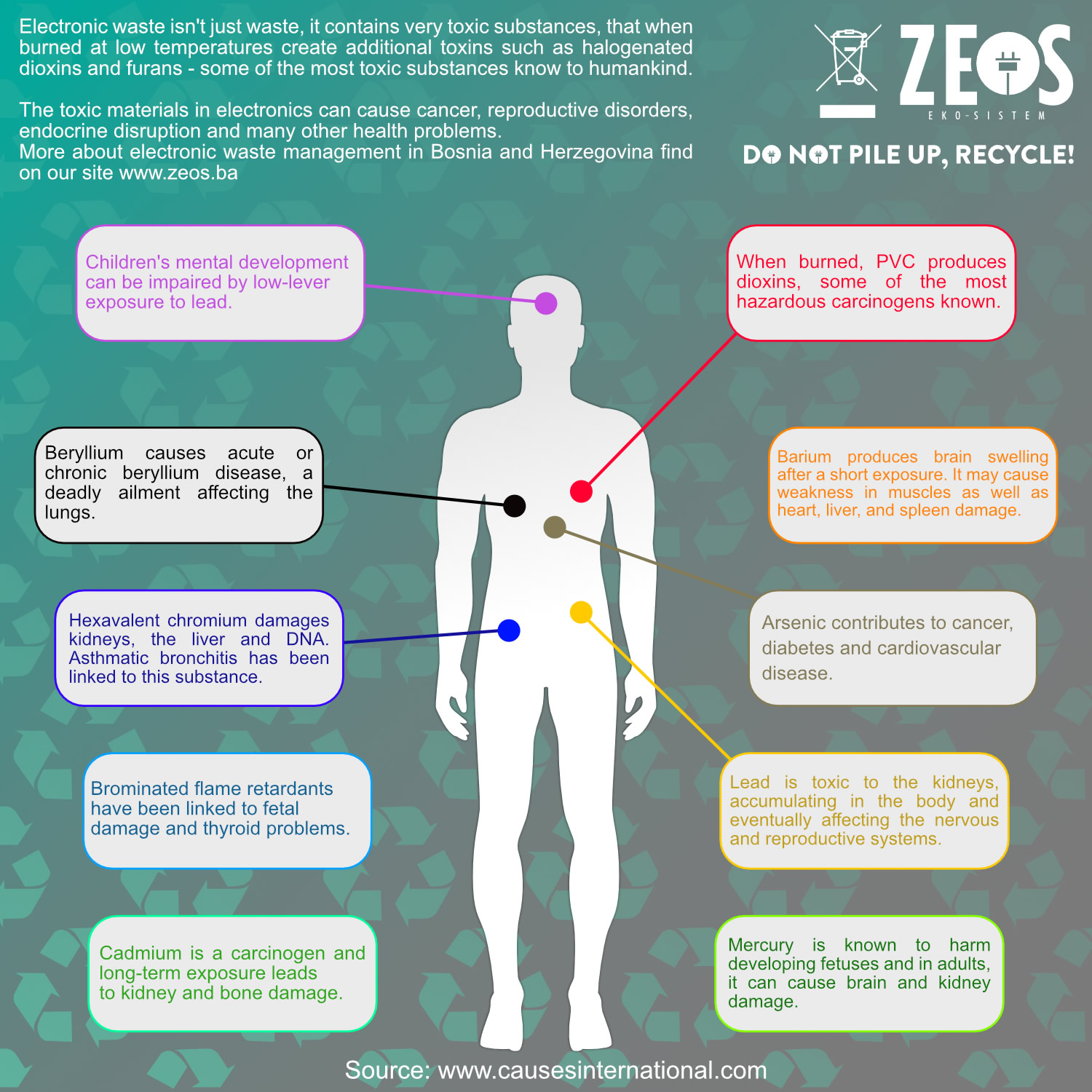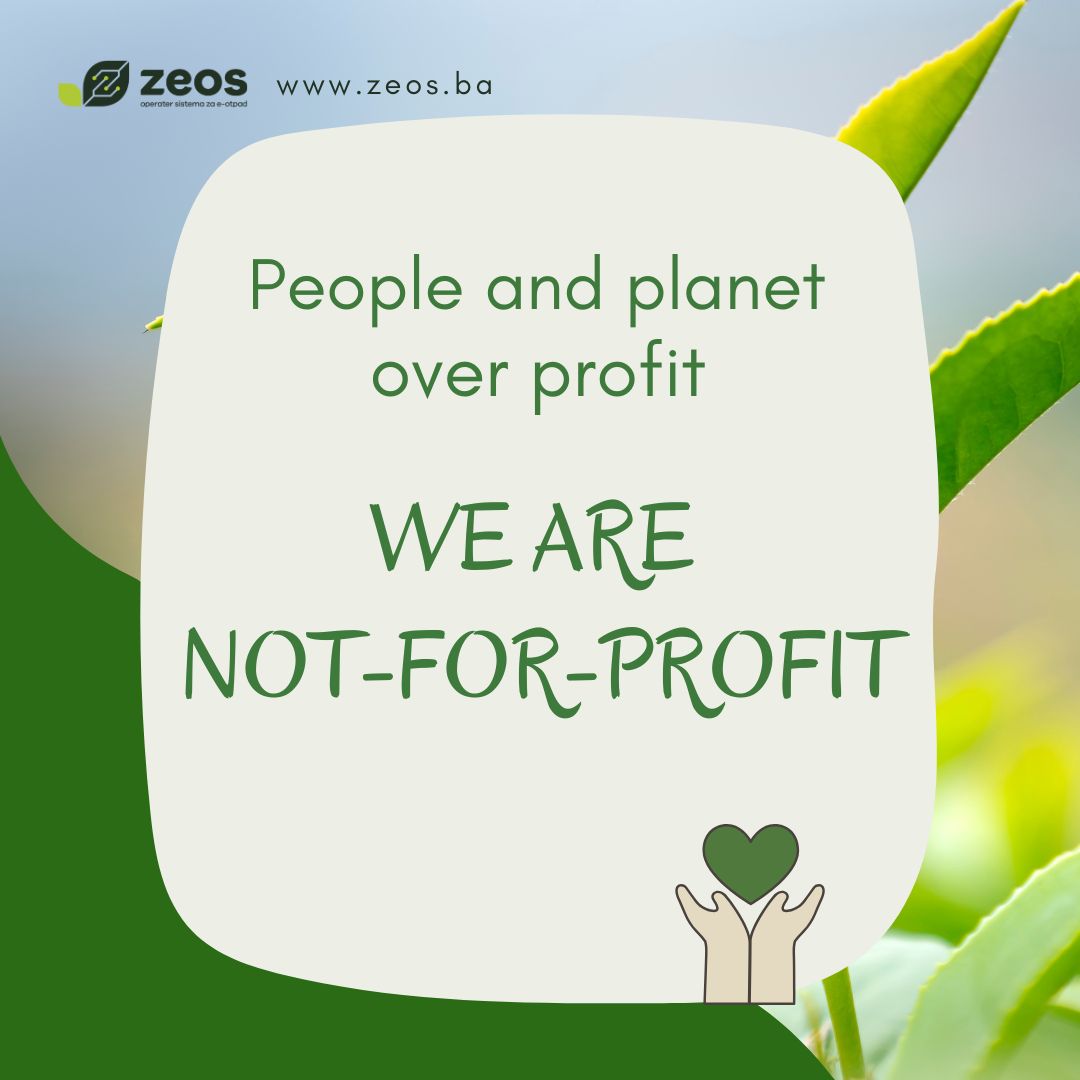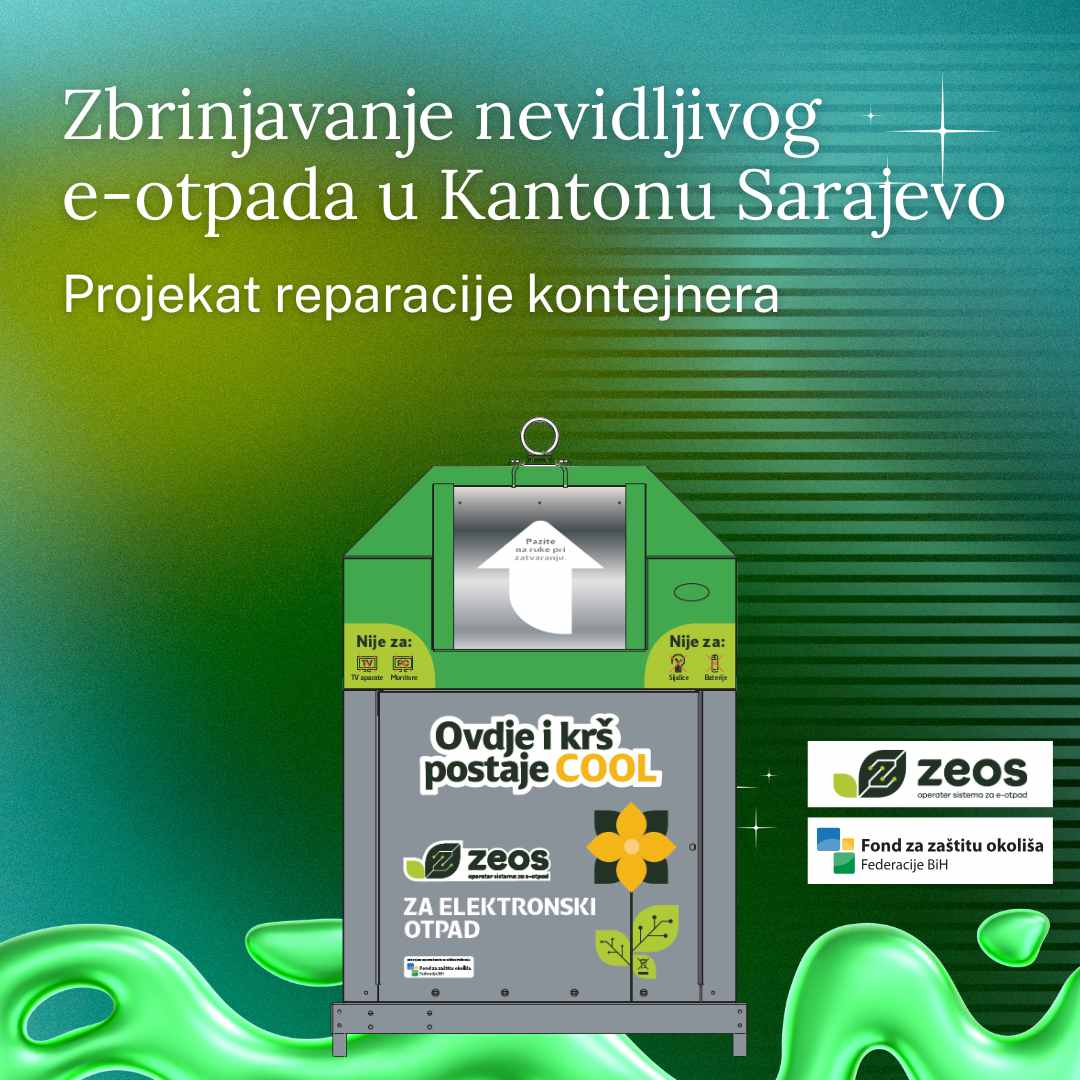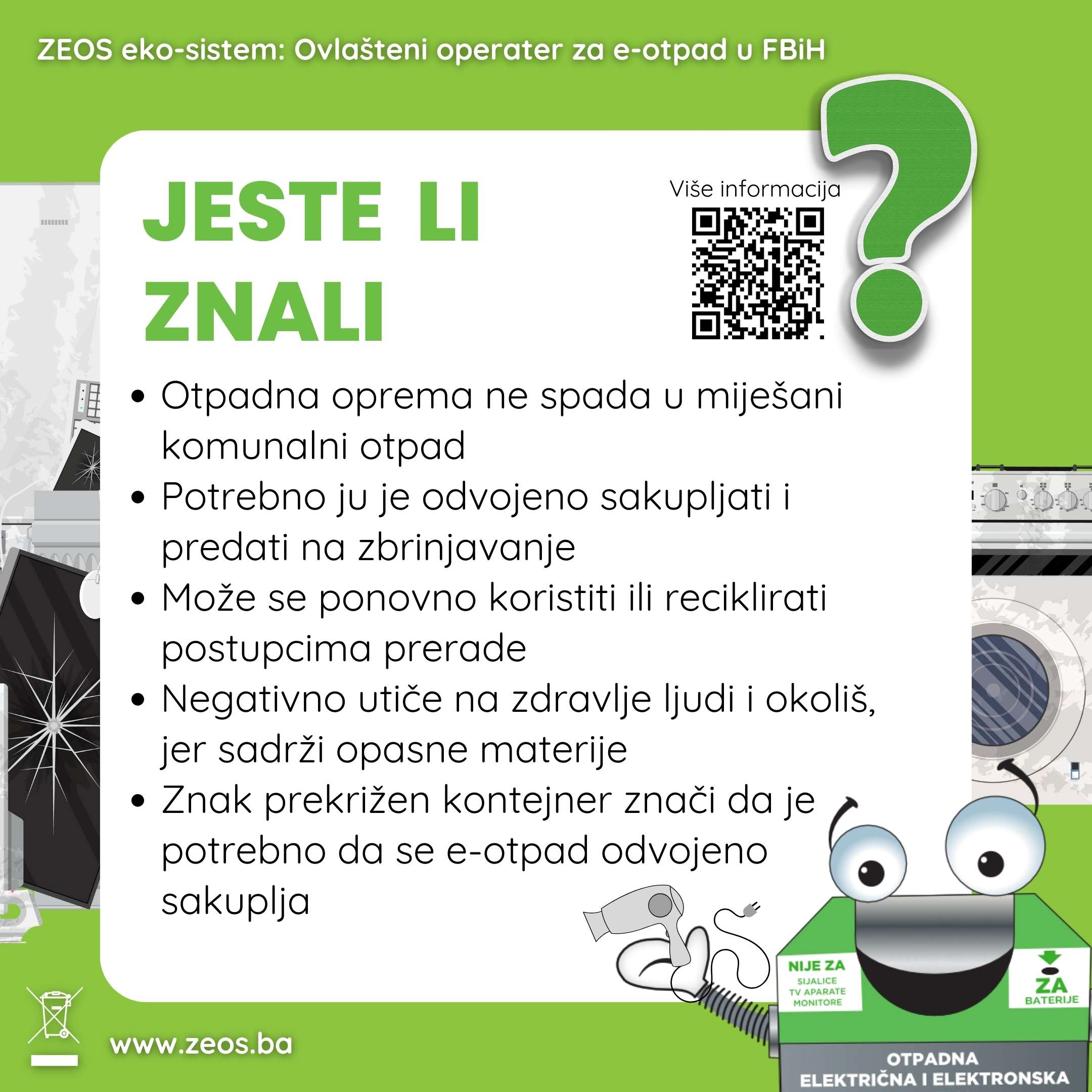Our results
Electrical and electronic waste is one of the categories of waste that is divided into ten classes.
E-waste classes contain valuable and, in some components, hazardous chemical substances that are carcinogenic, cause various diseases and pollution if not properly disposed of. The purpose of a proper disposal is to provide "clean" waste for manual or mechanical processing followed by recycling.
The value of raw materials extracted from waste is used to cover labor costs, logistics and final disposal. Citizens must ensure that they place waste in a proper container, otherwise, its destination is a landfill or illegal channels, resulting in environmental pollution.
The result of proper disposal of electrical and electronic waste is recycling and job creation in the recycling sector, and ultimately a clean environment free of pollution and disease.
Why recycling?
Recycling means the reprocessing of waste material in a production process for original or other purposes, excluding energy processing that represents the use of combustible waste to generate energy by direct incineration with or without other waste, but with heat regeneration.
By definition, "reuse" means any process by which non-waste products or their parts are reused for the same purpose for which they were originally made.
As laid down in Directive 2008/98/EC of the European Parliament and of the Council, “recovery/processing/energy processing/ recovery" means any operation the main result of which is waste that is useful as it replaces other materials that would otherwise be used for that specific purpose, or waste prepared to fulfill this purpose, at the factory or in the broader economic sense, and according to the list of procedures set out in Annex II to the said Directive.
By definition, "disposal/taking care of/setting aside/removal", means any non-processing operation, even where the operation results in a secondary recovery of the substance or energy, according to the list of procedures set out in Annex I to the Directive 2008/98/EC of the European Parliament and of the Council.
By definition, "processing" means any operation after the e-waste is delivered to sites for the removal of contamination, dismantling, grinding, treatment or preparation for disposal, and all other activities carried out for the treatment and/or disposal of e-waste.
Electrical and electronic waste / e-waste / old appliances / electro waste are classified as HAZARDOUS WASTE and contain many harmful substances for human health and environment, such as: mercury, cadmium, chromium, bromine, lead, arsenic, asbestos, silicon compounds, beryllium, phosphorus etc. As electrical and electronic devices are increasingly used, these chemical elements and compounds often come into contact with humans causing various types of diseases.
Hazardous substances and components in electrical and electronic waste are:
- CADMIUM - Found in IR readers and chip resistors. It harms kidneys, bones and it deposits in the body.
- MERCURY - Located in light bulbs and screens. It harms kidneys, brain and fetus development.
- BERILIUM - A highly carcinogenic substance. It is located in motherboards.
- LEAD - Located in monitors. It harms the nervous and reproductive systems and inhibits mental development of children and fetuses.
- HEXAVALENT CHROMIUM - Used as protection against corrosion. It causes DNA damage and asthmatic bronchitis.
- BARIUM - Used in cathode-ray tubes. It causes brain swelling and harms liver, heart and spleen.
- PVC - The burning of plastic produces toxic gas dioxin.
- HCFC gases - Gases that deplete the ozone layer
- Other hazardous components - batteries, toners, cathode-ray tubes, electrolytic capacitors and oils.
Due to the above hazardous substances, it is not allowed to dispose of e-waste together with other household waste. It is necessary to separate it and hand over to authorized collectors or dispose of it in some of the ZEOS's street waste containers.
The recycling results in valuable raw material such as iron, copper aluminum, brass, copper wire. It is sold as secondary raw material which returns to the process of manufacturing new devices. This reduces the exploitation of natural resources and preserves our planet for future generations.




